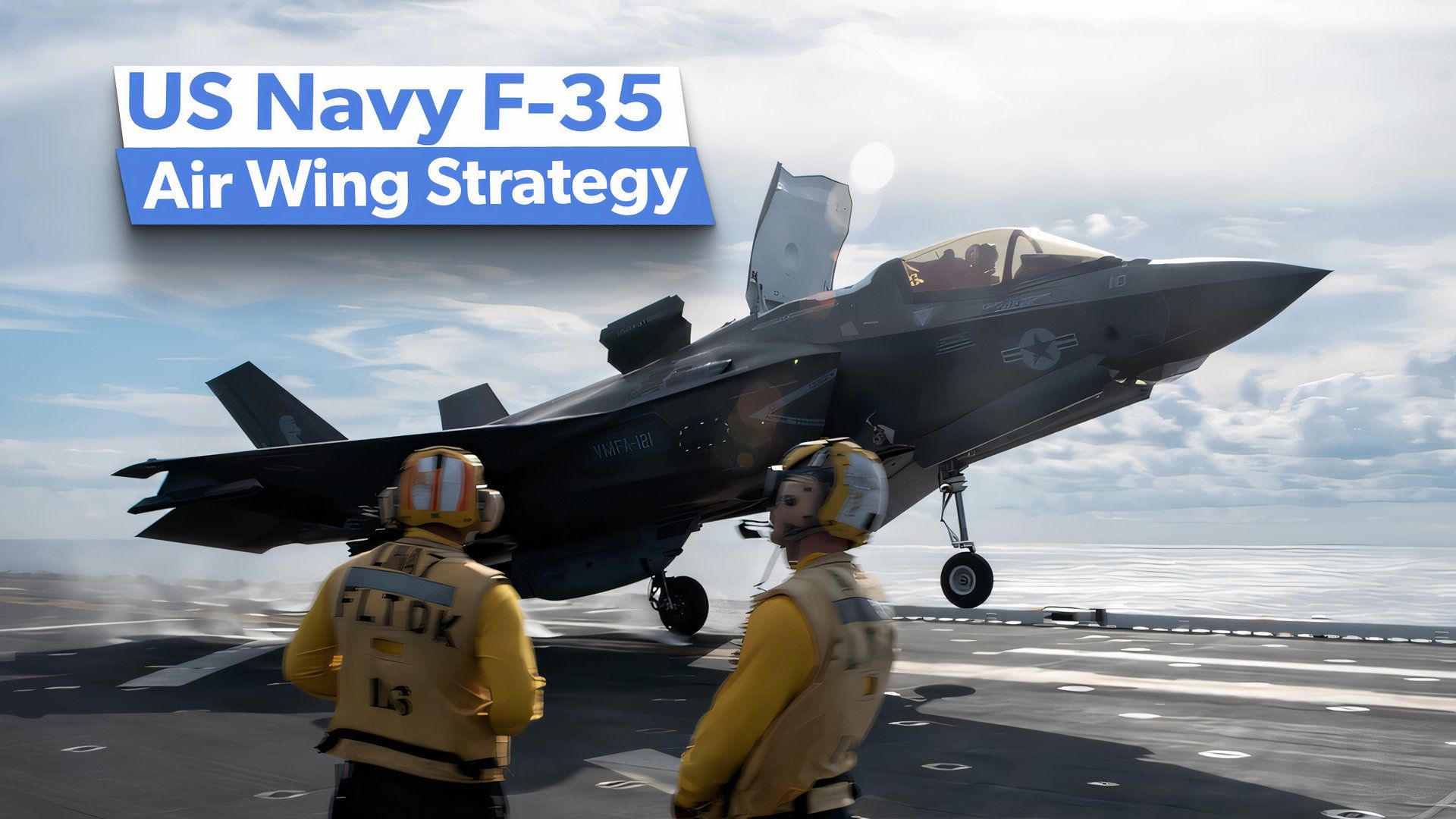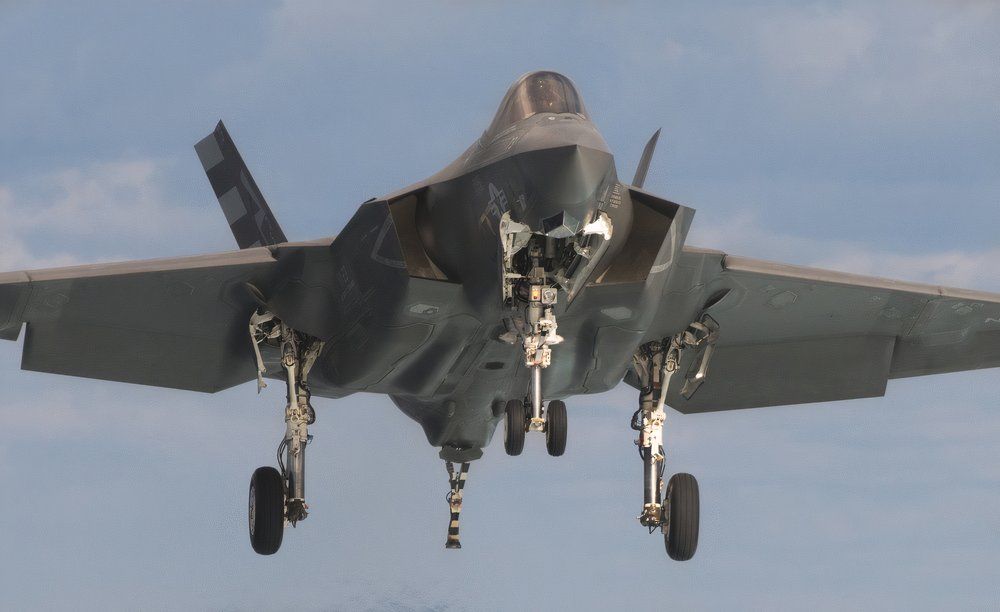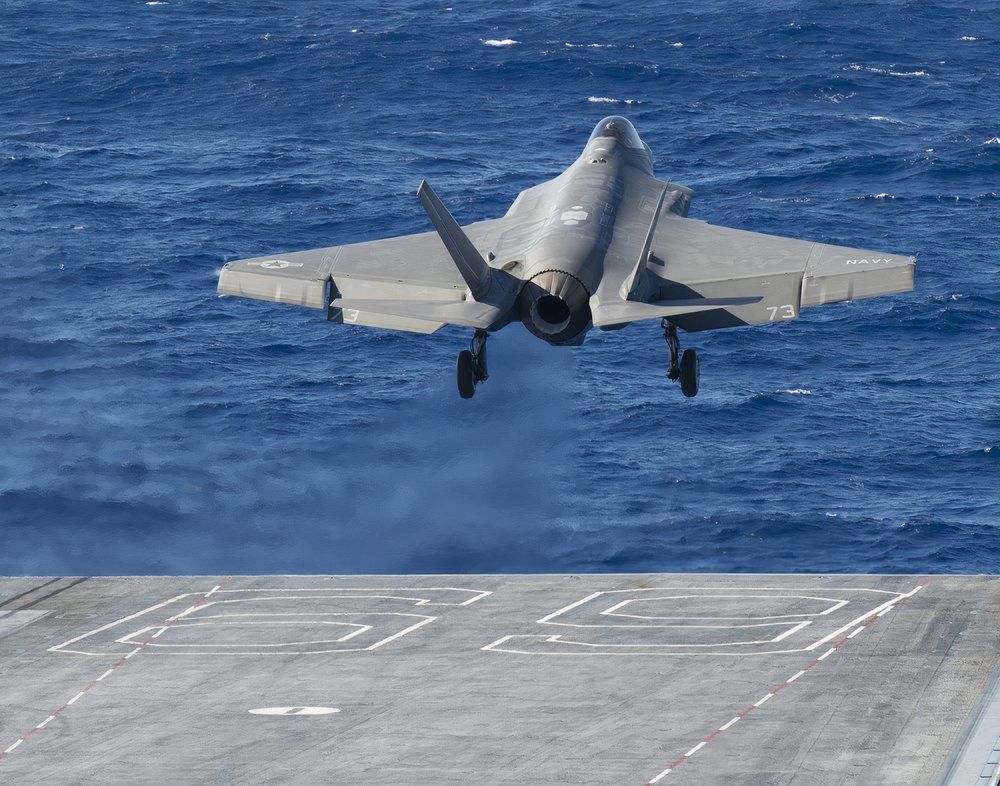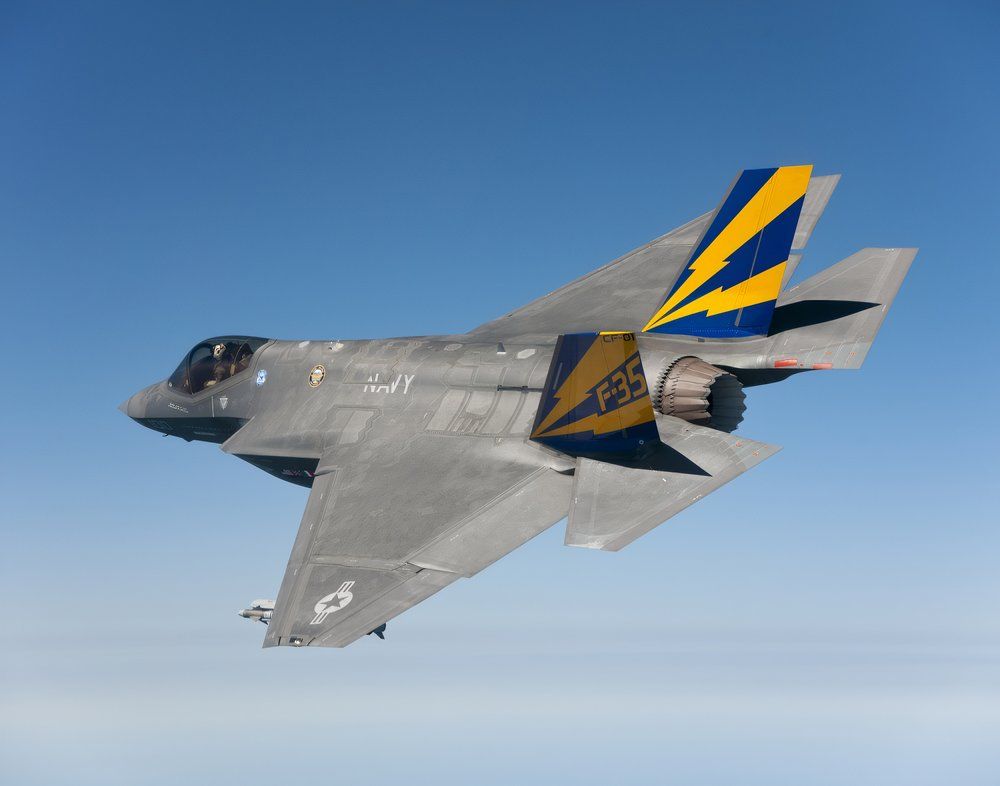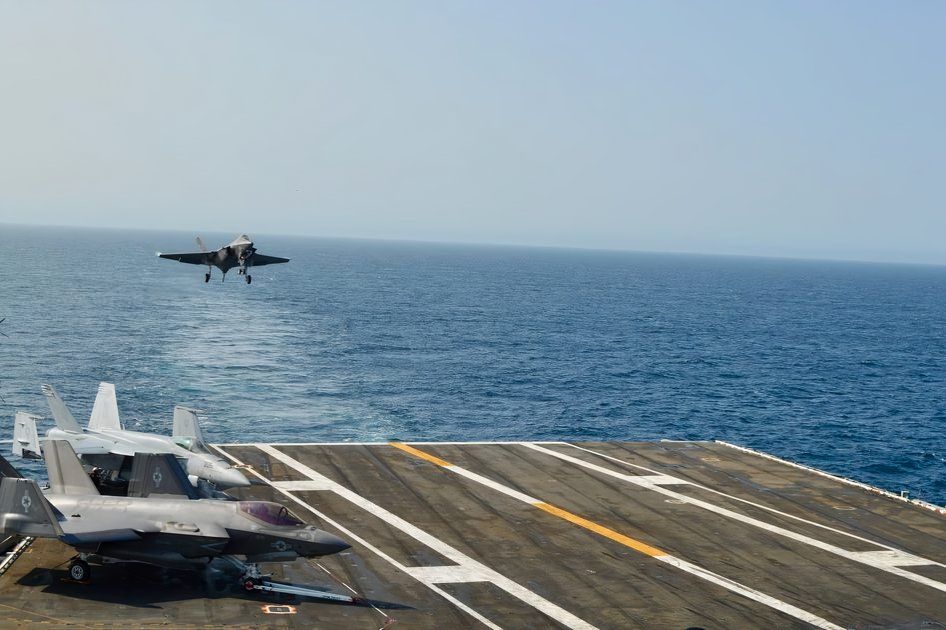The F-35C Lightning II is the US Navy’s
next-generation stealth fighter that is transforming naval aviation. With its unparalleled stealth technology, advanced networked warfare capabilities, and multi-role versatility, America’s Joint Strike Fighter (JSF) is not just a new platform — it’s a game-changer for the Carrier Air Wing.
Designed for carrier-based missions, this cutting-edge fighter
combines integrated avionics and innovative features like the Electromagnetic Aircraft Launch System (EMALS), enabling superior launch and recovery. Let’s explore how the F-35C is redefining the future of naval combat, delivering unmatched performance and dominance in the skies!
1
Stealth Technology
The F-35C Lightning II significantly boosts the US Navy’s air wing with its advanced stealth technology. This cutting-edge capability uses a low radar cross-section, allowing it to operate undetected in hostile environments. The F-35C enhances survivability and effectiveness during carrier-based missions. Stealth features enable successful precision strikes on enemy targets while minimizing the risk of detection. The F-35C’s integrated sensors improve situational awareness, allowing pilots to engage threats effectively. Incorporating stealth into the Navy’s air wing
, the F-35C redefines naval combat, ensuring operational superiority in modern warfare.
2
Network-Centric Warfare
The JSF was conceived and designed for networked warfare to function as a vital node in a larger combat network. The deployed F-35C squadrons on US Navy aircraft carriers emphasize advancing network-centric warfare capabilities. Squadrons of up to 20 F-35C Lightning II fighters
deployed by the Navy enhance situational awareness and real-time data sharing among naval assets. This integrated approach improves mission coordination and effective power projection during combat operations. The F-35C’s advanced sensors and stealth
technology enable it to operate seamlessly within a networked environment, redefining naval aviation
and ensuring that the Navy remains prepared for modern warfare challenges. The evolution of the JSF promises to significantly boost operational effectiveness of every Carrier Air Wing.
3
Multi-role Combat Capability
The F-35 is a versatile platform that excels in various missions, including: air-to-air combat, air-to-ground strikes, and intelligence, surveillance, and reconnaissance (ISR). The multi-role capability allows the US Navy to adapt to diverse operational needs without relying on multiple aircraft types. Consolidating multiple combat roles, and platforms, into a single aircraft. The F-35C streamlines operations on aircraft carriers and reduces the need for a diverse fleet. Its advanced
sensors and networking capabilities enable real-time data sharing, improving situational awareness and mission effectiveness. This versatility not only boosts the Navy’s overall combat readiness but also enhances its ability to adapt to evolving threats in modern naval warfare.
4
Integrated Avionics Systems
The F-35C Lightning II enhances the US Navy’s air wing through its advanced integrated avionics systems that increase the lethality of the most powerful weapon it wields – the pilot. The cutting-edge
systems streamline flight controls, navigation, and mission data into a single interface, significantly reducing pilot
workload. Real-time data processing and superior situational awareness allows F-35C pilots to make tactical decisions quickly during complex missions. The integrated avionics also facilitate seamless communication and data sharing with other naval assets, enhancing overall mission effectiveness. By improving coordination and operational efficiency, the F-35C’s avionics
systems are crucial in maximizing the Navy’s combat readiness and adaptability in modern naval warfare.
5
EMALS Compatibility
The F-35C Lightning II was originally designed to be compatible with the electromagnetic aircraft launch system (EMALS). EMALS benefits the US Navy’s air wing because it provides a more efficient and reliable method for launching aircraft from aircraft carriers
when compared to traditional steam catapults. This compatibility allows the F-35C to maximize its weight and performance capabilities during takeoff, enhancing operational flexibility. With EMALS, the Navy can achieve quicker launch cycles and improved aircraft
loadout for any sortie, which increases the overall strike capacity of the carrier air wing. Integrating the F-35C with EMALS ensures a more effective and agile force for the future of naval operations.
The F-35C Lightning II serves a pivotal tactical role within the US Navy’s Carrier Strike Group (CSG), leveraging advanced technologies to enhance operational effectiveness and adaptability in modern warfare. As the Navy’s next-generation stealth fighter
, the F-35C is engineered to penetrate heavily defended airspace without detection. This advanced stealth capability allows the aircraft to conduct precision strikes on high-value targets while minimizing the risk of interception, thereby providing CSGs with a significant tactical advantage in contested environments.
A cornerstone of the F-35C’s technology is its integrated avionics systems, which consolidate various functions into a single, user-friendly interface. This sophisticated system delivers real-time data on threats, mission parameters, and navigation, enhancing pilots’ situational awareness. With quick access to critical information, decision-making during complex operations becomes more effective and efficient. Additionally, the F-35C’s networking capabilities enable seamless communication and data sharing with other naval assets, facilitating coordinated attacks and improving overall mission effectiveness.
The F-35C’s multi-role versatility further enhances its tactical role. It can execute a wide range of missions, including air-to-air combat, air-to-ground strikes, and intelligence, surveillance, and reconnaissance (ISR). This adaptability allows the CSG to respond dynamically to various operational scenarios, maximizing the effectiveness of its air wing. The ability to perform multiple functions from a single platform reduces the need for diverse aircraft types, streamlining operations and enhancing overall combat readiness.
Furthermore, the F-35C’s compatibility with the Electromagnetic Aircraft Launch System (EMALS) significantly improves launch efficiency aboard aircraft carriers. EMALS allows for faster and more reliable aircraft launches, optimizing mission readiness and enabling rapid deployment of combat power.
In summary, the F-35C’s advanced technology enhances the tactical role of the US Navy’s Carrier Strike Groups. By ensuring air superiority and operational effectiveness, the F-35C is instrumental in redefining the Navy’s approach to modern naval warfare.

